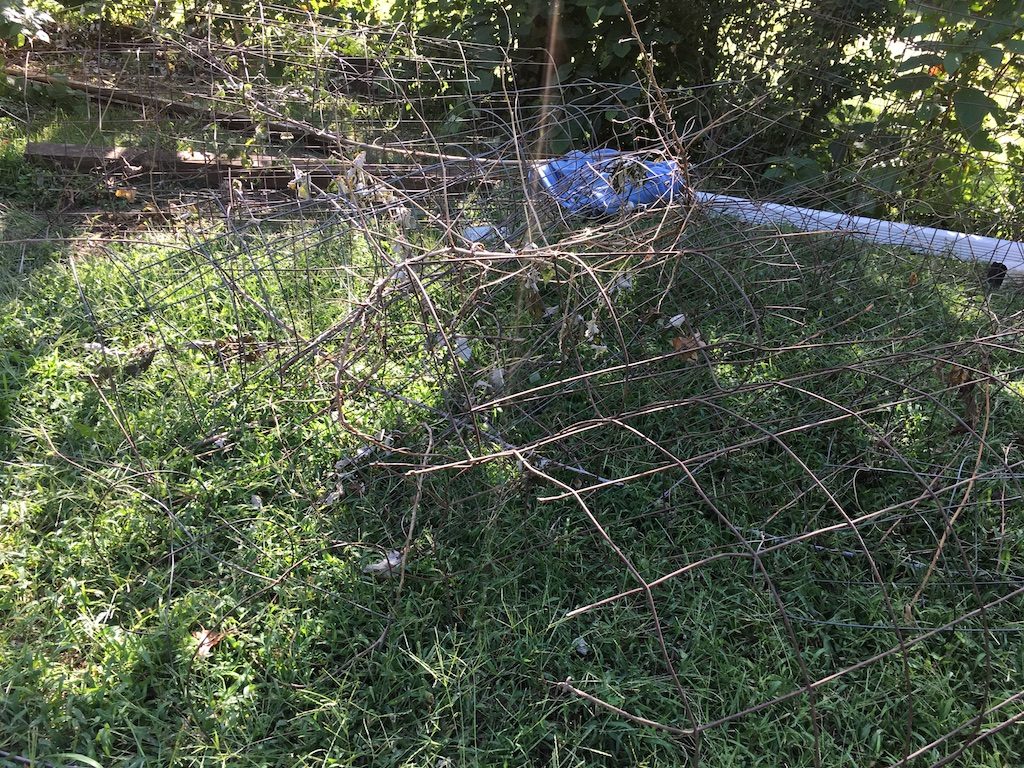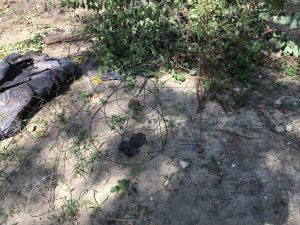When Snowball and I moved back to her family’s homestead to take care of her mother, we had big plans for making it a place for all of the family members to visit and enjoy. Little did we know how much work was going to be involved.
Most of the land had been used at one time or another for some type of gardening. In years past there were vegetable and fruit gardens. More recently Snowball’s mom has turned it over to her passion for flower gardening. Front yard and back are both the talk of the neighborhood for its abundance of every kind of flower imaginable. All during the Midwestern growing season there is a new and different bloom everyday. And mom is out there during the sun light hours weeding and watering the garden and giving tours to neighbors who happen to walk by.
But mom is in her early eighties and there are more and more areas of neglect in the farther reaches of the yard. These are places where not only plants and bushes have grown wild. Also found in these niches are a world of discarded farm and garden implements, fencing and most surprising of all, unchaperoned tomato cages! Yes, I have found out one of natures most carefully guarded secrets. When certain garden equipment is left alone for extended periods of time, it spontaneously reproduces. The most prolific of these species is the common tomato cage.
I’m sure you’ve seen the creature I’m talking about. Tomato plants are one of the most grown vegetables (or is it a fruit) in city gardens in the U.S. Because the stem is too flimsy to support the weight of the mature fruit, a grower will put this simple round cage around the plant to hold it up. After the growing season is over they put these cages in their garage or backyard shed and save them for next year. This is the most common setting for this garden implement.
But on Snowball’s family land these cages have set in the open, unattended for many years since they’ve been called to duty. During this time with no other concern they reproduced to enormous numbers. Its not surprising that this reproductive process has evolved. It is just natural for the cages to put the small end of one into the large opening of another. Most have been found in piles but many have eked out a solitary existence in random places around the property.
We’ve done our best to gather the specimens in a fenced-in area in an attempt to keep them under control but at last check they have grown higher than the plastic tarp covering the cage.
Please, if you have any tomato cages left over from the growing season, be careful how long you store them unattended. My observations lead me to believe the reproductive cycle takes place over several years so make sure you separate them early in the season next spring. Otherwise you too could be overrun by the attack of the tomato cages.
If you like the Curmudgeon’s off-center way of looking at things, tell your friends and like this site on Facebook. The more readers he gets the more encouraged he is to write. Also use the form to subscribe to this site so that when he does write you get an email telling about it.





